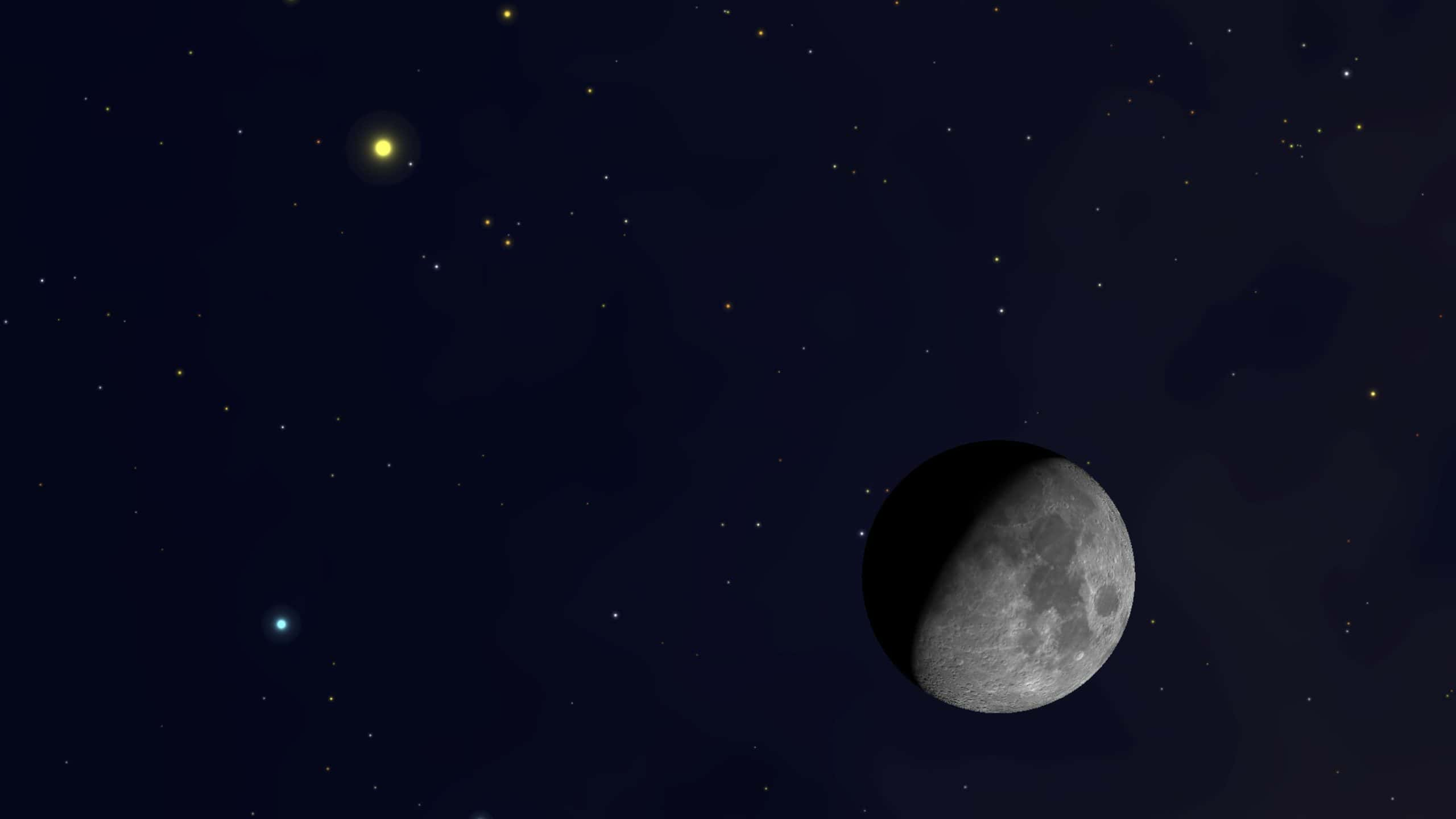The close rendezvous is scheduled for Sunday, December 17, marking a celestial event where the moon, nearly half-illuminated, and Saturn will share the same right ascension, akin to celestial longitude, in what astronomers term a conjunction of planets.

In a celestial spectacle set to captivate sky gazers, the moon is poised to engage in a remarkable conjunction of planets with Saturn, the solar system’s second-largest planet
Observers in New York City can witness the cosmic rendezvous from midday when the moon ascends, with Saturn positioned just to the right of the five-day-old moon in the constellation of Aquarius. As the evening unfolds, the conjunction of planets becomes increasingly visible, extending until the celestial duo sets to the southwest at approximately 9:48 p.m. EST on December 18. The moon will shine brightly with a magnitude of -11.5, indicating its brilliance in the night sky, while Saturn, with a magnitude of 0.7, will be dimmer by comparison.
During this close approach, the moon will loom over Saturn, appearing over 100 times larger in the night sky, an optical illusion arising from Earth’s vantage point. Saturn, residing about 930 million miles from Earth, stands ten times farther from the sun than our planet, causing light to take approximately 1 hour and 23 minutes to traverse the distance.
The moon, located a mere 230,000 miles away, enables light signals to traverse the gap in a brief 1.2 seconds
This stark contrast underscores the vastness of space, with the Earth/moon system fitting into the gap between Saturn and Earth over 4,000 times. The significant size differential between the moon and Saturn becomes apparent when considering their diameters and volumes. While the moon, measuring approximately 2,200 miles in diameter, is dwarfed by Saturn’s expansive width of 72,300 miles, the volume comparison is even more staggering. It would take 760 Earths to fill Saturn’s volume, emphasizing the immense scale of these celestial bodies.
For enthusiasts eager to witness this cosmic ballet, utilizing telescopes or binoculars is recommended for an enhanced view. Furthermore, photography enthusiasts can explore our comprehensive guides on capturing the moon, planets, and the night sky, along with recommendations for top-notch cameras and lenses tailored for astrophotography. The conjunction of planets promises an awe-inspiring display of celestial harmony, inviting observers to contemplate the vast cosmic expanse.




